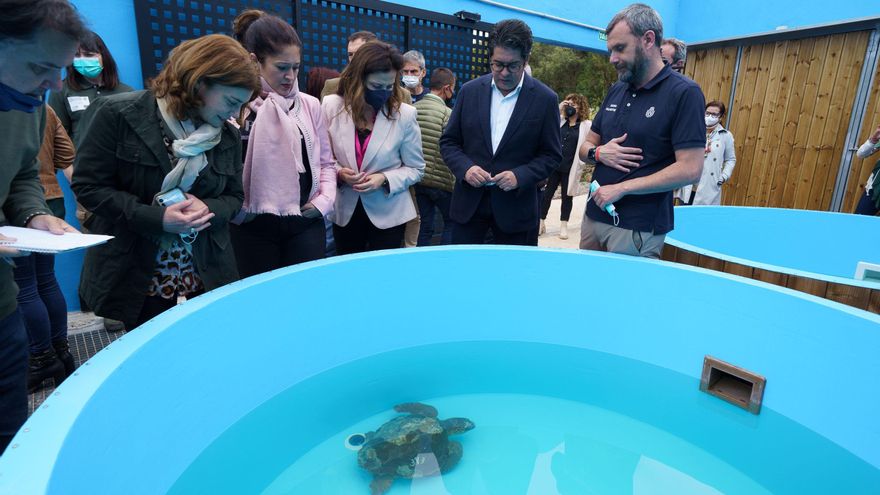
The Council of Tenerife has launched in La Tahonilla Wildlife Recovery Center new facilities for the rehabilitation of sea turtles recovered in the waters of the Island and that, after the necessary clinical care, are returned to their habitat.
These new facilities are made up of several large saltwater tanks and a counter-current swimming channel that is used for the re-adaptation of the turtles before they are released back into the sea.
“In La Tahonilla we offer an alternative to recover specimens belonging to the island’s own fauna. It is a space dedicated to rehabilitating animals that have had some type of accident. For example, there are many cases of turtles that arrive with problems derived from getting entangled in the sea in nets or nylon, or having consumed plastic and are treated at this center,” said the president of the Cabildo, Peter Martin.
In the presentation of these new facilities located in the Center on the Carretera de La Esperanza, he added that the continuous improvement of this service also serves so that “through environmental education actions, the population of Tenerife is aware of the work that is carried out with wildlife and, furthermore, highlight the importance and diversity of the insular fauna and flora”.
“The presence of plastics in the sea is one of the most common reasons for turtles to enter in La Tahonilla”, pointed out the Councilor for Management of the Natural Environment of the Cabildo, Isabel García, for which, she said, “we have invested in these new pools to facilitate the recovery of sea turtles. As a novelty, one of these pools has a countercurrent water circuit that will serve to improve the rehabilitation of some specimens that have lost some of their fins or have buoyancy problems.”
In the same way, along with the new facilities, the opening ceremony has presented three new murals made by the graphic artist Erik_Air based on the diversity and the species that are usually attended in the center, a painted surface of more than 400 meters squares in which a journey through the different levels of vegetation and habitats of the island is made.
The Fauna Recovery Center occupies two hectares of the 26 of the La Tahonilla farm, where the Cabildo also has the headquarters of one of the island’s nurseries and also of the island’s forest fire control and extinction teams.
The Center is an important tool for the conservation of wildlife and for environmental education of island biodiversity for the Island. In the facilities a service is active 12 hours a day, 365 days a yearand approximately 1,500 animals a year are collected there, plus 2,500 shearwaters in the campaign to raise the flight of this species.
















